French Painter Who Received the French Art Prize Late 1800s and Early 1900s
nine Things to Know About Rosa Bonheur
French artist Rosa Bonheur was by and large accepted to be the about famous female person artist (if not the near famous artist) of her 24-hour interval. We look into her life and times to discover the reasons behind her exceptional popularity and fame. Nosotros get to know the prominent painter and sculptor much better past sharing interesting insights nearly her background and biography every bit well.
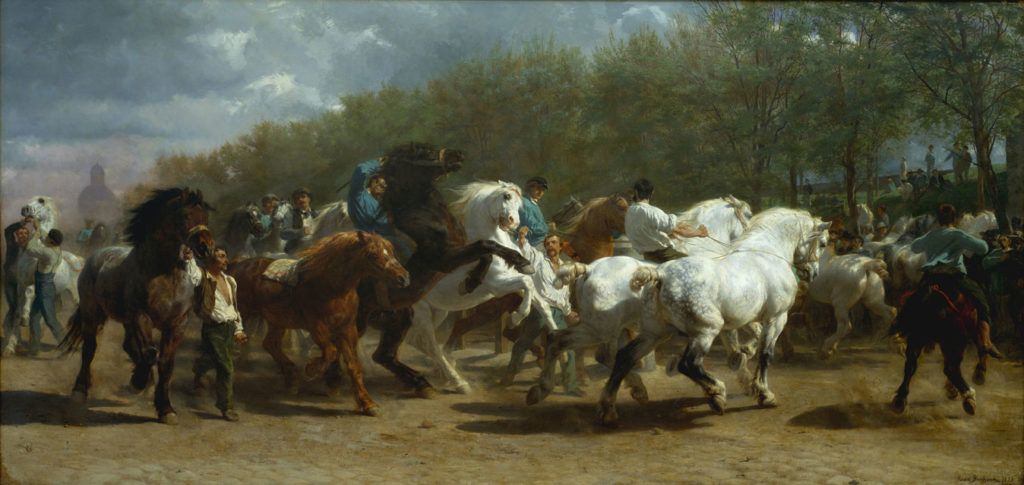
ane: Rosa Bonheur came from a family of artists.
If such a matter was possible, no one would be more than likely to have art mapped onto their DNA than artist Rosa Bonheur (1822-1899). She was born to a piano teacher mother and an artist father with a portrait and landscape painting business. Oscar-Raymond Bonheur encouraged all iv of his children, starting with his eldest daughter Rosa, to pursue fine art when it became obvious they had talents to nurture.
Rosa's three other siblings eventually developed into artists in their ain right and include painters Auguste Bonheur and Juliette Bonheur as well blood brother and sculptor Isidore Jules Bonheur.
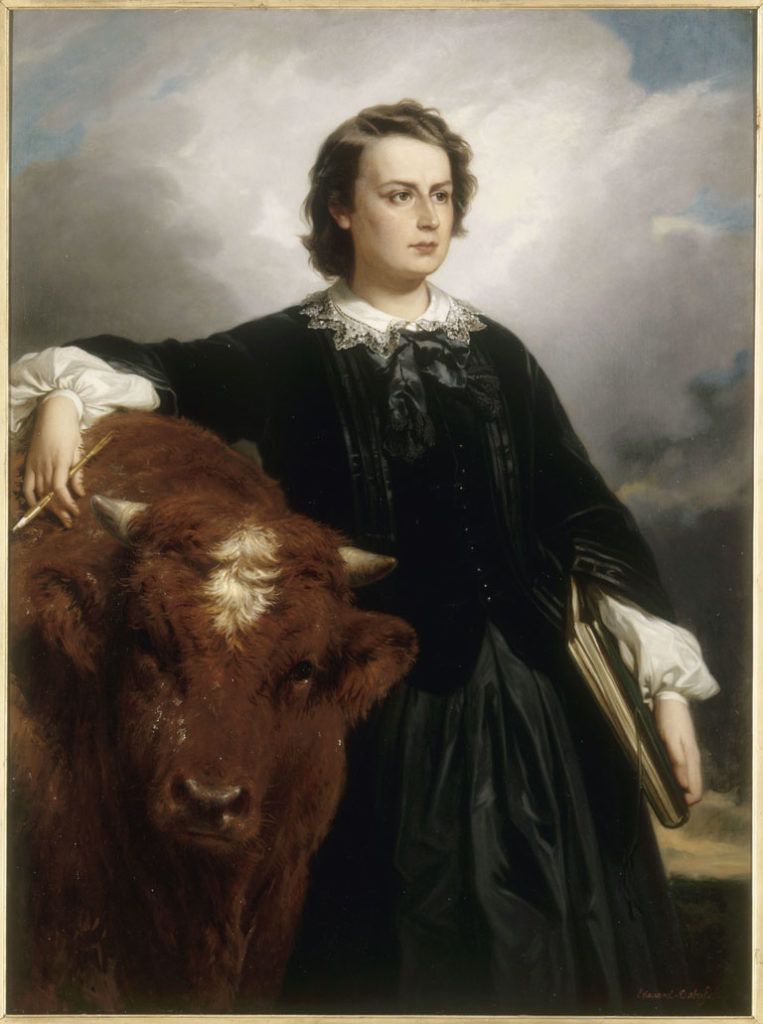
2: Rosa Bonheur was an animalière.
In French republic, an creative person who specialized in the painting of animals was chosen an animalière. Rosa Bonheur, or RB as she was known to her contemporaries, was an animalière par excellence. Her career was largely made on sentimental, only ever incredibly skilled, depictions of horses and cattle, goats and sheep.
Bonheur's 2 most famous paintings—Ploughing in the Nivernais and The Horse Fair—were both brute themed. The former shows teams of oxen at the plow. The latter is an nearly 20-foot-long painting of a equus caballus sale on the streets of Paris.
The root of Bonheur's dearest for animals actually sprang from her troubles learning. She was a scrap of a rowdy child and had a hard time reading. The story goes that her female parent lured her in with a task Rosa establish irresistible: drawing a different beast for each letter of the alphabet of the alphabet.
When her begetter somewhen took her under his wing equally a painting apprentice, Bonheur got unprecedented admission to people and places that fed this fire including famed scientist Etienne Geoffroy Saint-Hilaire'southward zoological gardens. She visited slaughterhouses and dissected animals to better empathize anatomy also and attended horse markets every calendar week to sketch the subjects she was then enamored with direct from life.
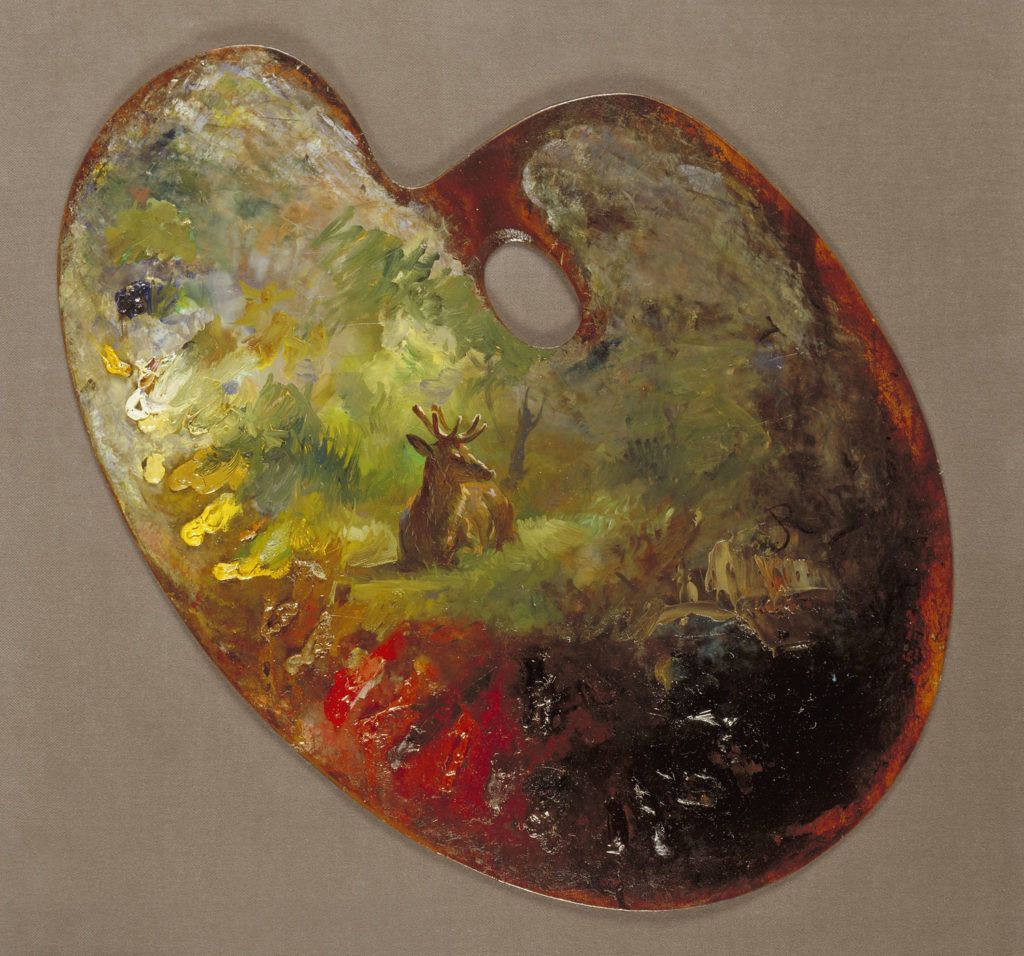
3: Rosa Bonheur faced tough stuff.
Despite taking her on as a student, Rosa's begetter was in and out of her life between his bouts of staying in relative isolation with the Saint Simeon sect in their retreat outside of Paris. Rosa'south mother passed away when she was 11.
Perchance the loss somewhat explains Rosa'south difficulties in school. She was disruptive in class and expelled from several institutions. Her apprenticeship with a seamstress when she was 12 was such a debacle that her father decided immediately to take his daughter as his own educatee, training her as a draftsman, sculptor and painter. Rosa's male parent eventually left his family to live with the Saint Simeon sect total-time in 1834.
4: She was an independent artist.
Rosa Bonheur first exhibited her paintings at the Paris Salon when she was xix. The works she showed–oil paintings of rabbits and goats–garnered her instant attention. Prizes and commissions rolled in from there. She was the get-go adult female to ever receive the Grand Cross by the French Legion of Laurels.
For the residuum of her life, Bonheur lived well-off financially, which was in large role a credit to the resourcefulness of dealer Ernest Gambart.
Gambart championed the concept of subsidiary rights. With his guidance, Rosa was able to secure substantial profits non just from the sale of her original paintings but from copyrights held on reproductions of her work. Engravings of The Equus caballus Off-white were sold in France, United kingdom of great britain and northern ireland and the Usa. Bonheur even had a doll made in her likeness that is at present a rare collectible.
5: Rosa Bonheur painted 2 major works.
Plowing on the Nivernais was a commission from the French government. The Horse Fair was bought past Gambart and it eventually went on tour to the U.k. and was even put on brandish for a private viewing for Queen Victoria. Cornelius Vanderbilt eventually purchased the massive oil and donated it to the Metropolitan Museum of Fine art, where information technology resides today.
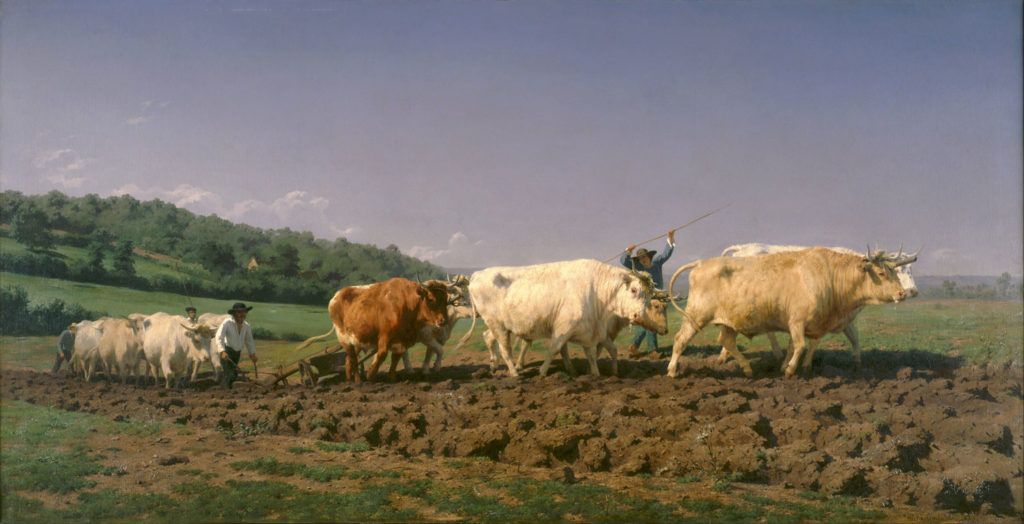
6: She faced a sure contemptuousness.
Bonheur's father was a follower of French social philosopher Saint-Simon, who believed in the equality of the sexes. Rosa was raised as an equal to her brothers and this independent mindedness led the artist to live her life on her own terms.
She kept her hair curt and wore dresses for social occasions but lived mostly in menswear. She fifty-fifty obtained permission from the French government to vesture pants publicly so equally to exist able to movement more hands and safely in the environments that she worked in. Her working attire also consisted of a loose smock and heavy boots that protected her feet. She smoked cigars publicly and hunted. She once told a male friend, "… if you simply knew how little I care for your sex activity, you lot wouldn't get such queer ideas into your head. The fact is, in the mode of males, I like only the bulls I pigment. "
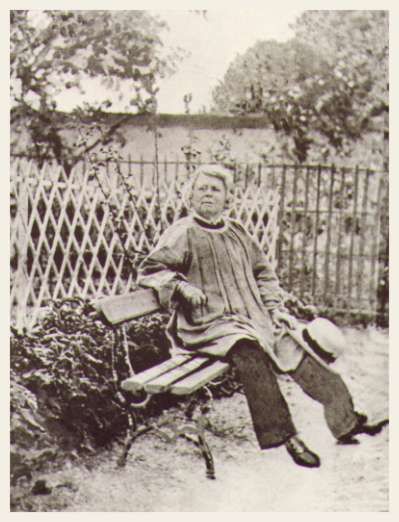
vii: Rosa Bonheur lived a public life.
Rosa Bonheur was an exception for her times as both a woman and homosexual. She lived her private life very much publicly with piffling secrecy, which was unprecedented for the time, and had two committed romantic relationships with women during her life. The offset was with Nathalie Micas, whose family unit took Rosa in when her mother died. Rosa and Nathalie lived equally partners until Micas' death more than than 40 years afterwards.
Her second human relationship was with American artist Anna Klumpke, who was more than 30 years younger than Rosa. Klumpke managed Bonheur's estate upon her death and wrote her biography and established the Rosa Bonheur Memorial Art School to offer teaching to women.
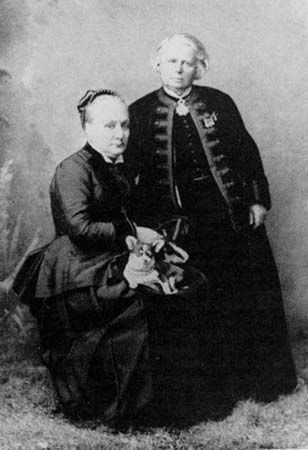
8: Her virtually famous work was of Buffalo Bill.
During the last decade of her life, Bonheur continued painting. The well-nigh famous work of this period is the portrait she painted of Buffalo Bill astride his horse. Yeah, indeed, in 1889 Bonheur saw Col. William F. Cody's Wild West show at the Paris Exposition and sketched the famed sentry's portrait. The sketches became the ground for Bonheur'southward painting, The Buffalo Hunt. Cody eventually used the painting prominently in his ain publicity campaigns.
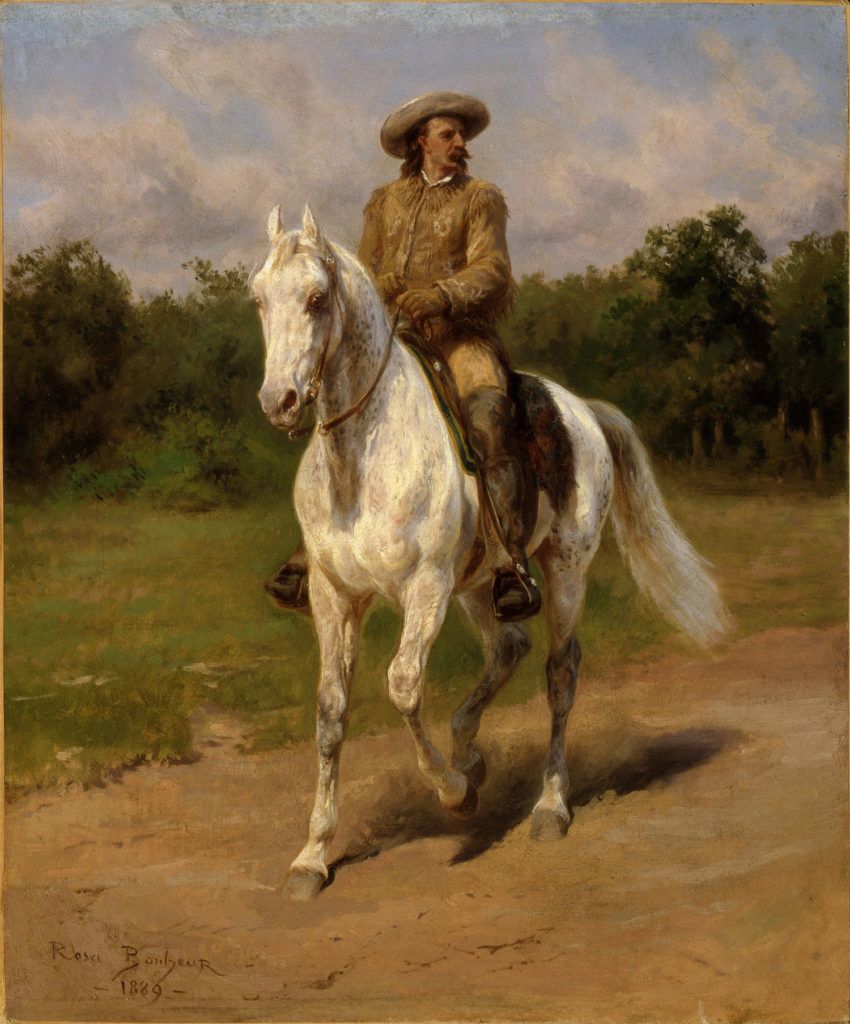
9: Rosa Bonheur was acclaimed, but fell out of style.
Like many 19th-century realist painters, Bonheur's popularity faded significantly after her death and the dawning of the 20th century. The sentimentality of her piece of work offered trivial appeal to modernistic artists. In 1978 a critic describedPlowing in the Nivernais every bit "entirely forgotten and rarely dragged out from oblivion" thought the work traveled to China that same year and Bonheur's obscurity was somewhat mitigated.
With the prominent placement of The Horse Fair in the galleries at the Metropolitan Museum of Art, Bonheur is certainly a mainstay for millions of museum visitors each year. But information technology is her exceptional biography and identity as a gay female artist living boldly and independently in a very constrictive fourth dimension that has pulled her completely out of obscurity.
Yous might also like…
Meet 10 Female Artists Who Inverse the Art World
Georgia O'Keeffe, Her Life in Paintings
5 Female Artists to Celebrate
everardbleenter1981.blogspot.com
Source: https://www.artistsnetwork.com/art-history/rosa-bonheur/